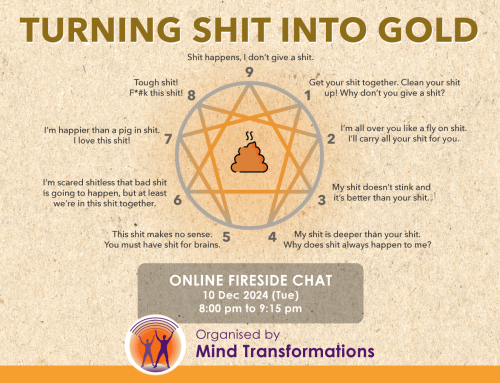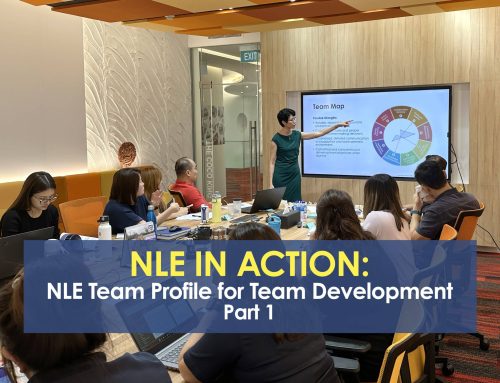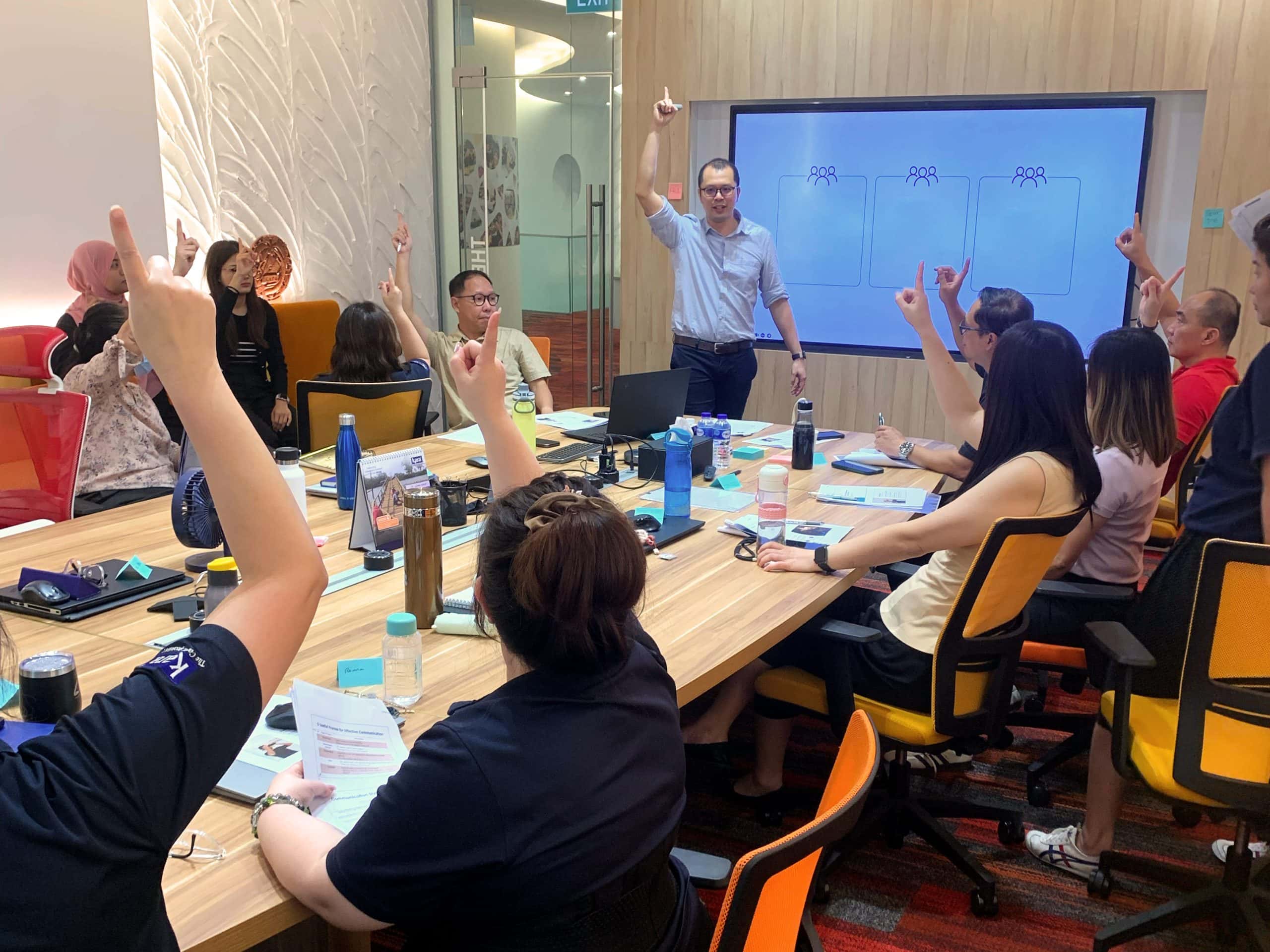
Neuro-Linguistic Enneagram (NLE) in Action:
NLE Team Profile for Team Development (Part 2)
When it comes to team development, it is easy to focus on the tasks to be done, but difficult to address elusive things like team dynamics, relationships and culture.
The Enneagram is an excellent tool for personal mastery, leadership development, and understanding and nurturing team dynamics.
“Ennea” means “nine”, and “gram” means “points or types”. Often used as a personality typology, it highlights why we do what we do. An insightful profiling tool for individuals, teams, and even organisation cultures, Enneagram can be used to predict behavioural tendencies and preferences, especially when people interact in group settings.
Created by Mind Transformations, the Neuro-Linguistic Enneagram (NLE) builds on the richness of the Enneagram personality system to empower individuals and teams by using Neuro-Linguistic Programming (NLP) principles and tools to overcome inherent personality and team challenges.
Within the NLE system, the NLE Team Profile© is a versatile and reliable predictor of how a team shows up. We’ve used it for over a decade in our consulting and team facilitation work to facilitate deep conversations with teams and their leaders and empower them to propel themselves to the next level.
Case Study: Gearing Up for Greater Growth (continued)
In the post-pandemic period, an MNC in the retail sector was experiencing rapid growth through brand acquisitions and store expansions.
Their regional Sales Operations (Sales Ops) team (15 people), covering the Southeast Asia (SEA) region, had seen a headcount increase, accompanied by staff attrition of approximately 25% in the preceding eight months.
They engaged Mind Transformations Consulting to conduct a team workshop to enhance team awareness and team understanding so that team members can work more effectively with one another and respond efficiently to change.
In Part 1, we revealed the information contained in the NLE Team Map©, the first tool in the NLE Team Profile©.
We continue the case study with the second tool in the NLE Team Profile©, the Four Pivotal Points (4PP).
Understanding the potential range of a team’s psychological dynamics during key work activities focuses the leader and team’s attention on approaches that steer the team toward optimal performance.
Four Pivotal Points (4PP)© - Zeroing in on the Team Dynamic at Key Work Activities
Teams come together for many reasons - planning, discussing, debating, brainstorming, decision-making, checking progress, problem-solving, etc.
These activities can be grouped into these four categories (pivotal points):
Dealing with Challenges
Identifying issues and priorities, setting objectives, solving problems, creating solutions, managing conflicts, etc.
Making Decisions
Making a call for action, including deciding on non-action.
Communicating & Interacting
Disseminating information in real-time, and building relations.
Driving for Results
Holding one another accountable to deadlines and milestones, and planning next steps to progress the work.
These four “touch points” express how a team functions and they also reflect the team dynamic. They have the potential to become “choke points” - stuck points that hinder team performance, or “leveraging points” - gateways towards a better team dynamic and performance.
Pivotal points have the potential to hinder or elevate team performance, depending on how the Leader and Team choose to express their personalities and tendencies.
When interpreting the team dynamic through the 4PP©, it is important to perceive it from the personalities and tendencies, as teams are made up of individuals. For example, when we look at Dealing with Challenges (one of the pivotal points), we are not analysing “problem-solving” as a topic or in a technical way but referring to how the team members would approach “problem-solving” or dealing with issues faced by the team given their personalities and tendencies.
Comparing the 4PP© profile of the Leader and the Team allows us to further unpack the interactions within a team.
A) Profile Comparison – Dealing with Challenges
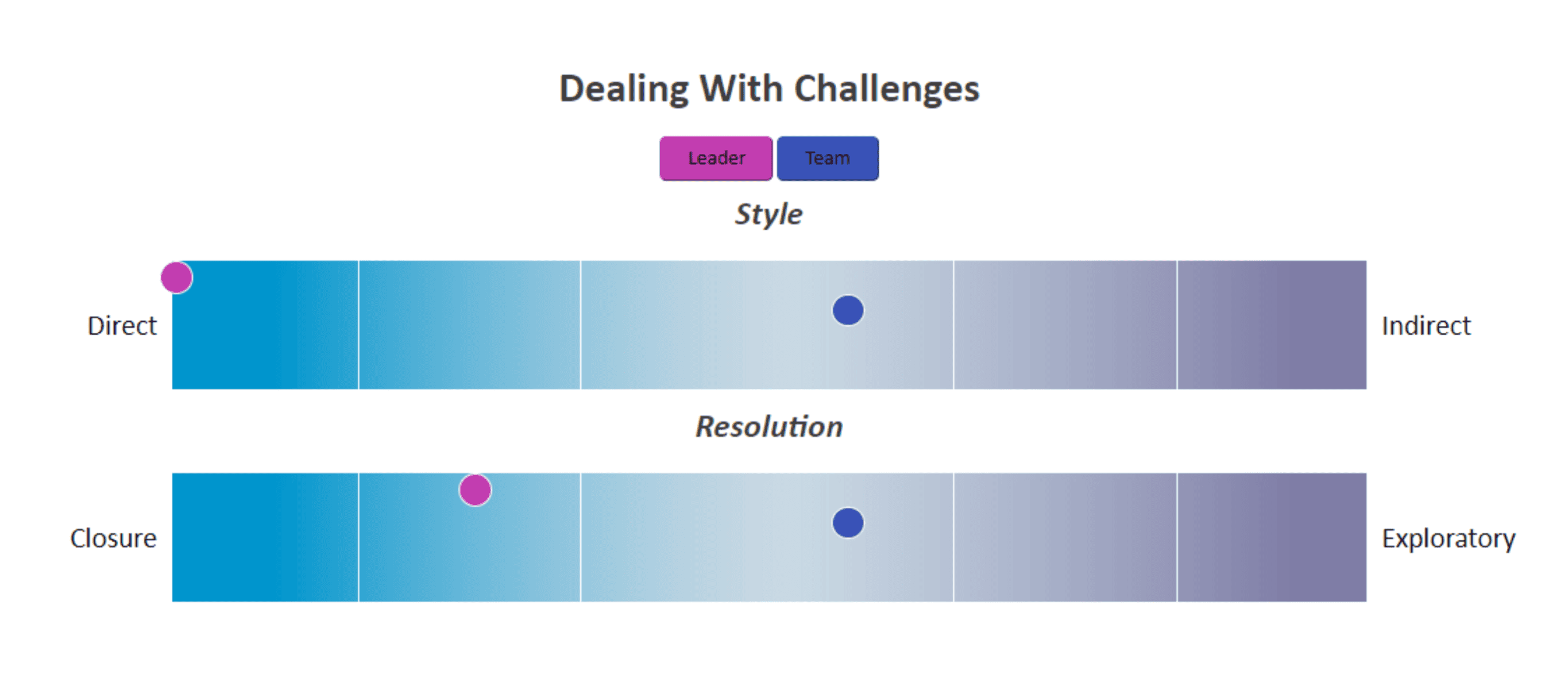
Observations:
The Leader’s tendency to solve problems is to tackle issues directly and with a stronger sense to put closure on matters (i.e. stronger sense of urgency to get things done).
The team’s tendency is flexible (near the middle of the spectrum for both Style and Resolution) – it can mean they have the flexibility to operate across the two spectrums, or they may be inconsistent in how they solve problems.
Implications:
Possible upsides
Potential pitfalls
Key recommendations:
B) Profile Comparison – Making Decisions
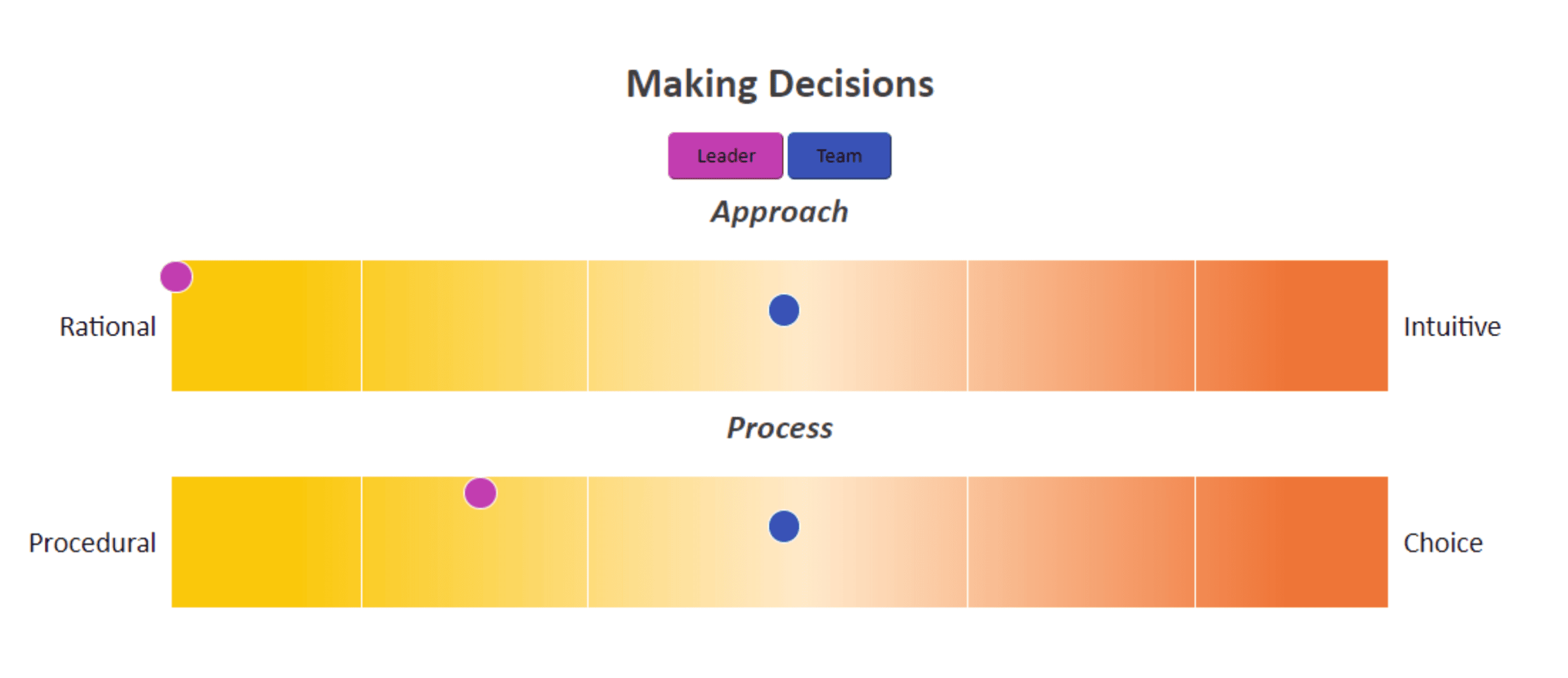
Observations:
The Leader values tangible, measurable data and takes on a logical, rational approach toward decision-making. He also prefers a more structured approach regarding the decision-making process.
The team’s tendency is again near the middle of the spectrum. This suggests that they may have the flexibility to operate across the two spectrums, or the team could be made up of individuals with strong preferences on the two poles – some prefer a structured and rational approach, while the others prefer a less structured and intuitive, gut-feel approach.
Implications:
Possible upsides
Potential pitfalls
Key recommendations:
C) Profile Comparison – Communicating & Interacting
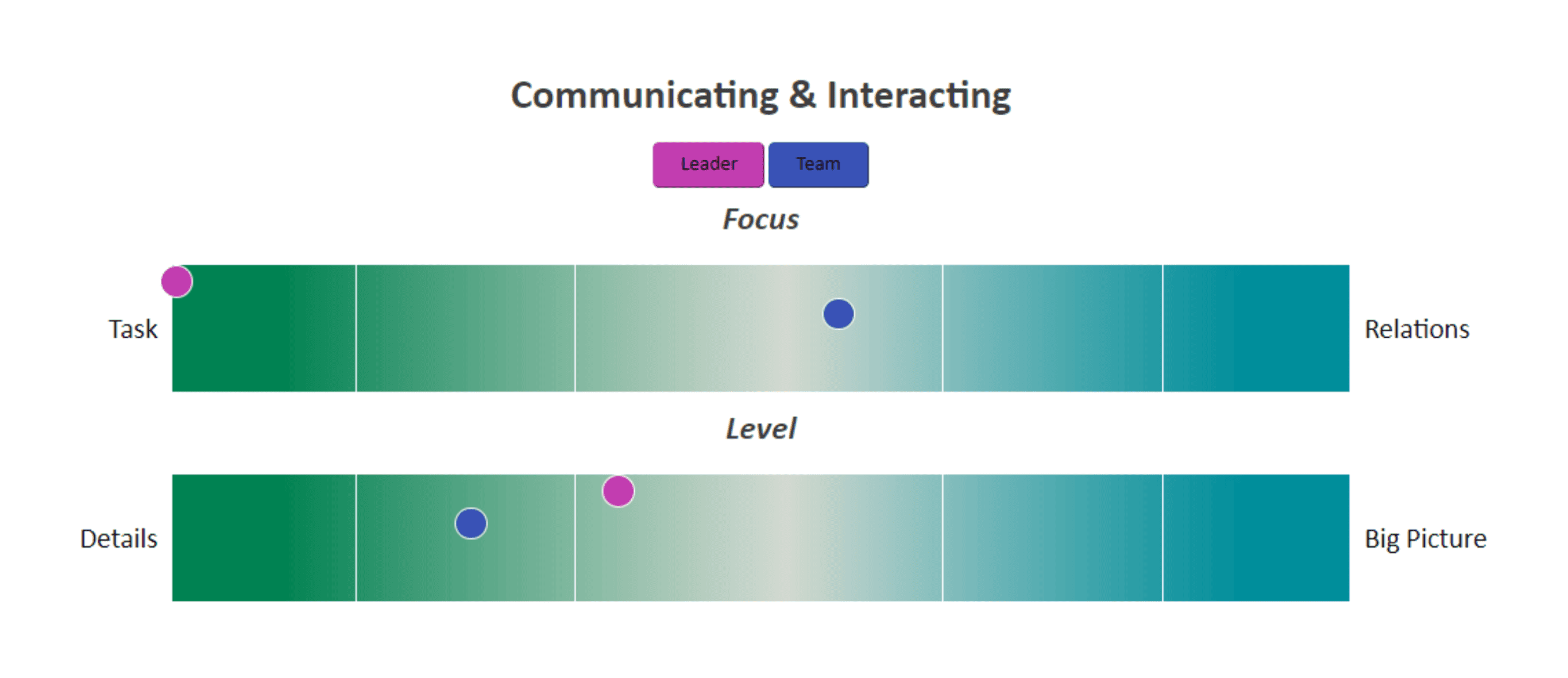
Observations:
- The Leader is a lot more task-oriented in communication and interaction, while the team has both task and relations focus. This was highlighted earlier in the Team Profile© (radar map).
- Both parties skew toward “Details” – this may mean there can be many discussions and meetings, and a lot of information exchange. However, the level of understanding still needs to be validated. The job nature of sales operations requires the team to be detail-oriented, so this is good.
Implications:
Possible upsides
Potential pitfalls
Key recommendations:
D) Profile Comparison – Driving for Results
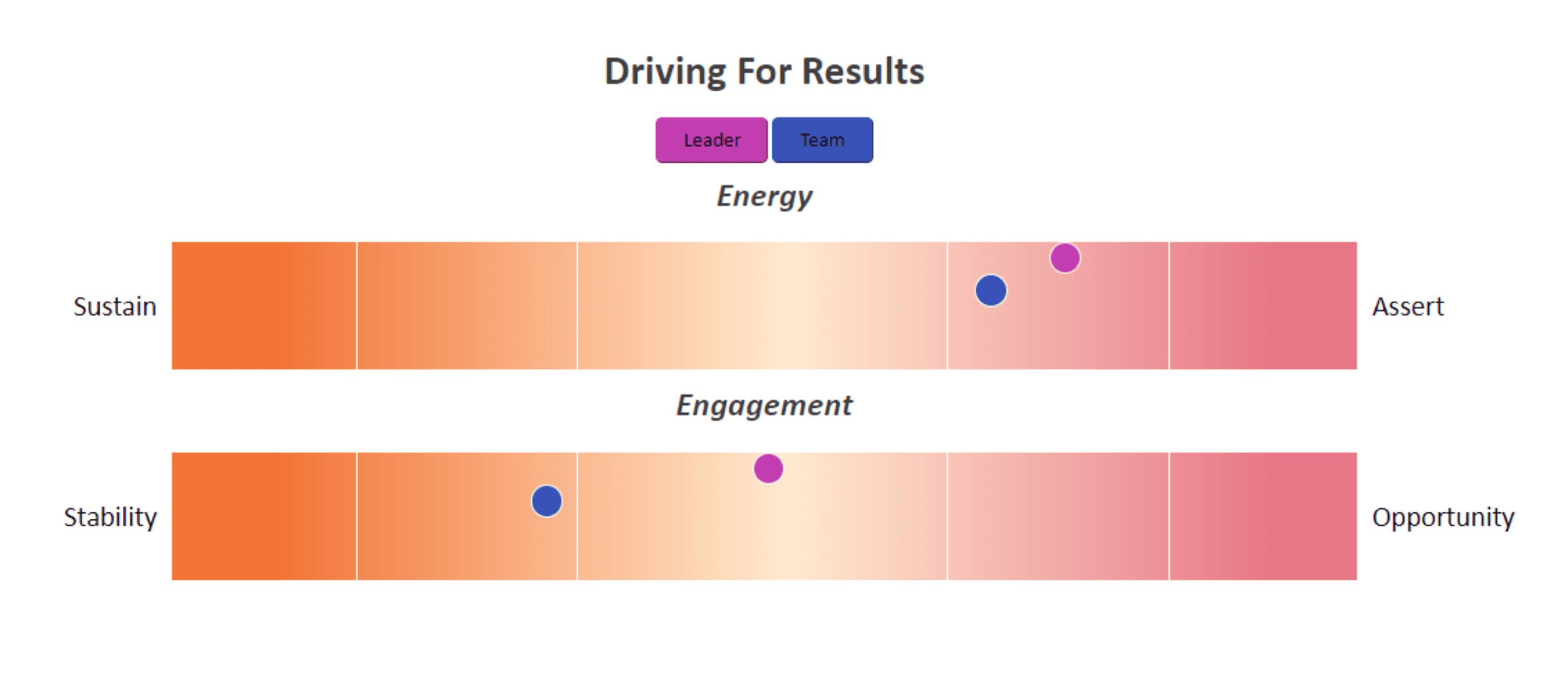
Every team spends time and energy – for the organisation, it is crucial that they achieve the results the organisation seeks.
Observations:
The Leader and the team’s approaches are quite similar – both are proactive in asserting their efforts towards something and their engagement focus has a good balance of “doing well” (stability-driven) and “doing more” (opportunity-driven).
The Leader profile is more assertive toward driving performance (expansion) while the team skews toward continuous improvement (incremental).
Implications:
Possible upsides
Potential pitfalls
Key recommendations:
The Four Pivotal Points (4PP)© create the opportunity for the Leader and Team to make conscious choices in how they operate to best leverage for optimal team performance.
Outcomes
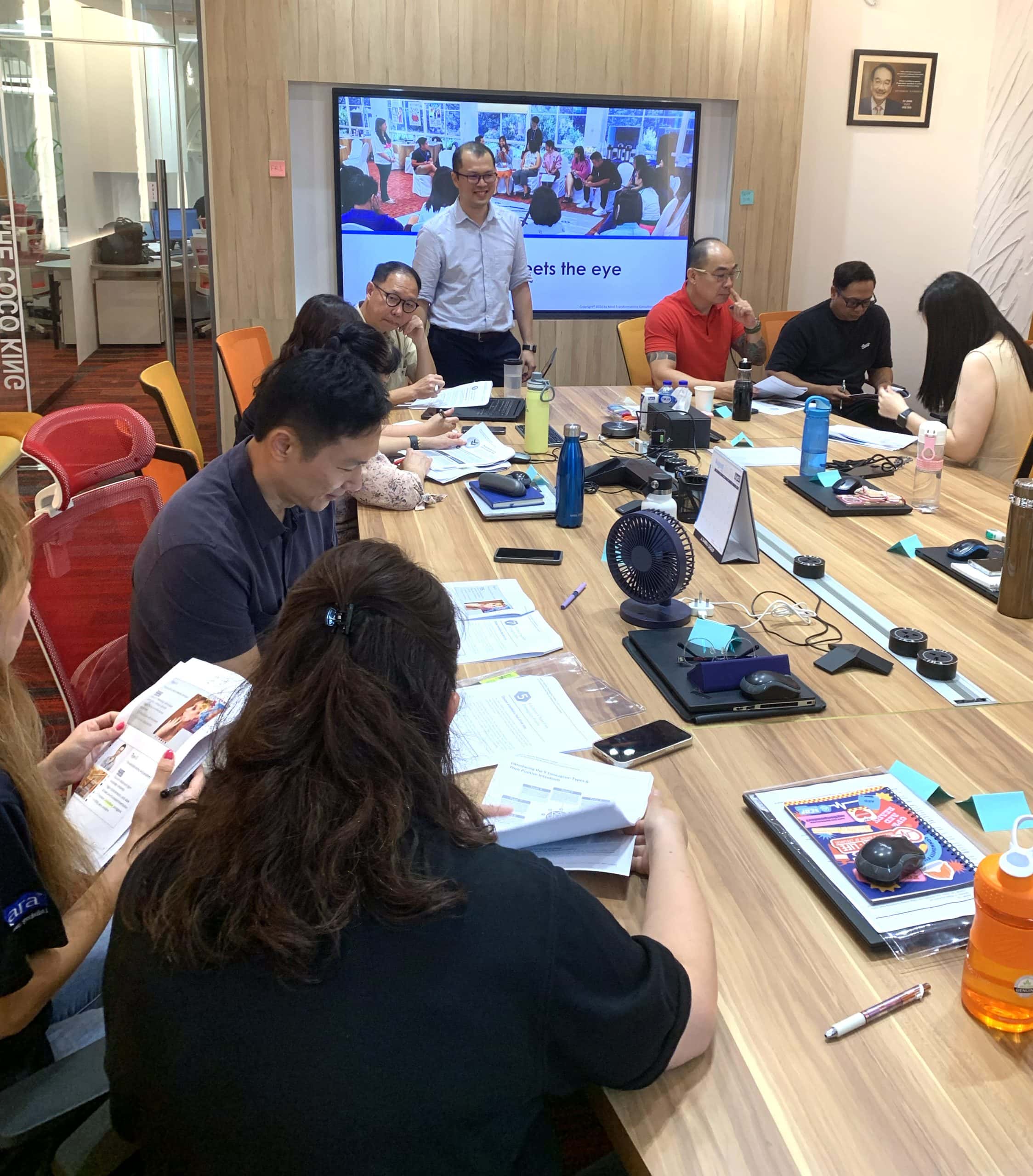
Mind Transformations Consulting (MTC) conducted a team building workshop, debriefing the team members for their awareness of their individual NLE profiles and establishing the team’s understanding with the findings from the NLE Team Profile©.
From examining the Four Pivotal Points (4PP)©, the team found that they had not discussed what “collaboration”, “trust”, and so on meant to them.
They also realised that the team’s relational style and preference for informal communication meant that they tended to hold passionate side conversations among themselves to discuss their concerns and fears, instead of tabling issues through formal channels (e.g. meetings). These conversations could be mistaken for resistance or lack of commitment towards the Leader.
The Leader realised that they needed an in-depth discussion as a team, and appointed MTC to facilitate a “Rules of Engagement” workshop, to have a deeper alignment conversation.
The workshop opened some honest conversations. Through the workshop, the team chose to adopt some of the recommendations from the 4PP©. They opted to stop the side conversations and raise their concerns and issues to the Leader directly. This deepened the trust within the team.
Through the conversation, the Leader understood his impact on the team, and the team also realised that they could not depend on the Leader alone to build the desired team culture. They grasped the message of "installing leadership within the team”.
After implementing their choice of approach from the “Rules of Engagement” workshop, the team members also included the rules of engagement when onboarding new hires to ensure they were assimilated into the team culture.
The result? The team saw zero attrition in the following year. Their score in the staff engagement survey was the best in the company. Everyone saw progress in both their personal and team development.
Summary
The two tools in the NLE Team Profile© - the NLE Team Map© and Four Pivotal Points (4PP)© - reliably predict how a team shows up, providing insights into a team’s potential strengths and possible tension points in the team dynamic.
This creates the opportunity for meaningful dialogue among the Leader and the team, to choose their approach towards optimal team performance.
At Mind Transformations, we have used it for over a decade in our consulting and team facilitation work to facilitate deep conversations with teams and their leaders and empower them to propel themselves to the next level.
It is not practical or realistic to hire and deploy the “best team”, because the most outstanding players (individually) may not enable the team to win the tournament. When we are able to optimise every team dynamic to bring out the best chance of winning, that’s when the magic happens.
If you're a leader, team coach or facilitator,
you can leverage the intelligence of the Neuro-Linguistic Enneagram (NLE) methodology and learn how to read and interpret a team’s profile to facilitate and coach them through the NLE Team Dynamics Analyst Certification.
You will begin your journey with a solid grounding in understanding human personality using NLE through the NLE Practitioner Certification.


